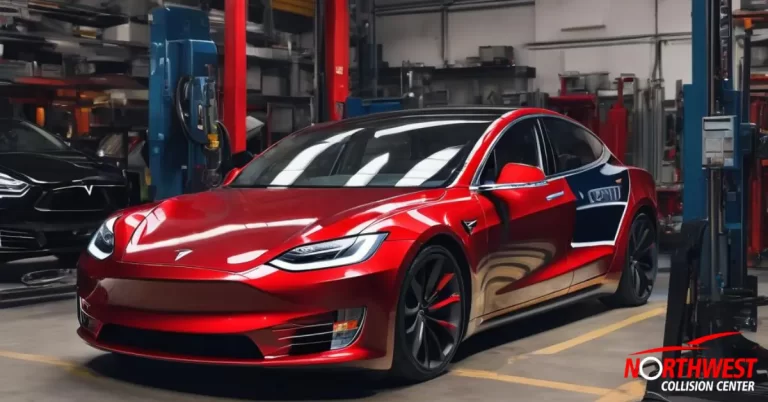As a proud Tesla owner, you understand the innovation and cutting-edge technology that goes into every Tesla vehicle. These electric cars are the epitome of modern engineering, with their sleek designs and advanced features.
However, no matter how careful you are on the road, accidents can still happen. When they do, it’s essential to find a repair shop that can restore your Tesla to its former glory. But here’s the thing – not all repair shops are created equal, and not all of them are equipped to handle the unique needs of your Tesla.
That’s where Tesla-approved body shops come into the picture. These are repair shops that have received the stamp of approval from Tesla itself. When you choose a Tesla-certified auto body shop for your Tesla repairs, you’re choosing expertise, precision, and a commitment to quality.
What Does it Mean to be a Tesla-Approved Body Shop?
Being a Tesla-approved body shop is like being in an exclusive club. It means that the repair shop has met Tesla’s stringent standards and requirements for quality and service. Tesla does not just hand out these approvals to any shop around the corner.
When a repair shop wants to be Tesla-approved, they have to go through an extensive evaluation process. This process includes demonstrating their technical expertise, their capability to perform Tesla-specific repairs, and their use of genuine Tesla parts. It’s like a test, and the shop needs to pass with flying colors.
But it doesn’t stop there. Tesla keeps a close eye on its approved shops, monitoring them to ensure they maintain their high standards. So, when you choose a Tesla auto body repair shop for car repairs, you can have peace of mind, knowing that your vehicle is in the hands of professionals who are held to the highest of standards.
Benefits of Choosing Tesla-Approved Repair Shops
Now that we’ve covered the what let’s dive into the why. Why should you bother choosing a Tesla-approved repair shop in the first place? Well, there are some sweet benefits that come with that choice:
1. Access to Tesla’s Repair Network
When you choose a Tesla auto body shop, you gain access to Tesla’s extensive network of service centers and authorized repair facilities. It’s like having access to a golden ticket that grants entry to the chocolate factory, but instead of chocolate, you get top-notch repair services for your Tesla.
2. Expertise in Tesla-Specific Repairs
Tesla-approved shops are the Jedi knights of the auto body world, trained in the art of Tesla-specific repairs. They have the knowledge, the skills, and the fancy tools needed to tackle any issue your Tesla may be facing. Choosing one of these shops is like choosing a seasoned pro to work their magic on your vehicle.
3. Access to Genuine Tesla Parts
When your Tesla needs parts replaced, a Tesla-approved shop can hook you up with genuine Tesla parts. These parts are made specifically for your vehicle, like a tailor-made suit. They fit just right and work in harmony with the rest of your Tesla, ensuring optimal performance.
4. Quality and Warranty Assurance
Tesla-approved shops are all about that quality. They strive to deliver repairs that meet Tesla’s standards of excellence. Choosing a Tesla-approved shop can also help preserve any existing warranties you have on your vehicle. It’s like getting an extra layer of protection for your Tesla.
The Bottom Line
Do not settle for anything less than the best for your Tesla. Going to a Tesla-certified auto body shop means you’re going to a shop that has earned the trust and recognition of Tesla itself. You can expect quality repairs, access to Tesla’s extensive service network, and the use of genuine Tesla parts.
So, the next time your Tesla needs repair after an accident, don’t forget to give it the care it deserves by choosing a Tesla-approved repair shop.
Get the Best Treatment Your Tesla Deserves!
If you’re looking for a Tesla body shop in Clearwater, FL, look no further than Northwest Collision Center. All Tesla models can be serviced by our team of certified and skilled technicians. We have a track record of delivering top-quality repairs and customer satisfaction. Contact us today, and let us get your Tesla back on the road in pristine condition!











